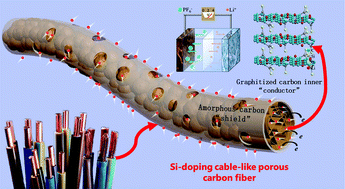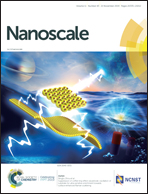Cable-like heterogeneous porous carbon fibers with ultrahigh-rate capability and long cycle life for fast charging lithium-ion storage devices†
Abstract
In this paper, we propose a space-confined foaming approach to fabricate cable-like heterogeneous porous carbon fibers (Si-CPCFs) containing an inner graphitized carbon “conductor” and an outer Si-doping amorphous carbon “shield”. Benefiting from the fast Li+ intercalation and high conductivity of the “inner conductor”, and the rich pseudocapacitance of the “outer shield”, the Si-CPCFs exhibit an ultrahigh-rate capability and cycling performance, leading to a high capacity of 132 mA h g−1 even at an ultra-high current density of 100 A g−1 after 10 000 cycles. The assembled lithium ion hybrid supercapacitors (LIHCs) also deliver a superior energy density of 50 W h kg−1 at an ultra-high power density of 113 kW kg−1, really achieving both a high energy density and power density of LIHCs. The success of the cable-like heterogeneous porous carbon architecture proposes a new direction to circumvent the discrepancy in kinetics and capacity mismatch, and also attracts more attention to heterogeneous nanostructures with multiple functions.



 Please wait while we load your content...
Please wait while we load your content...